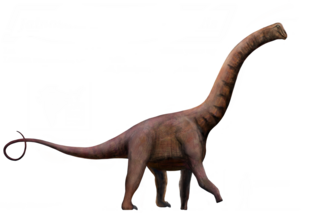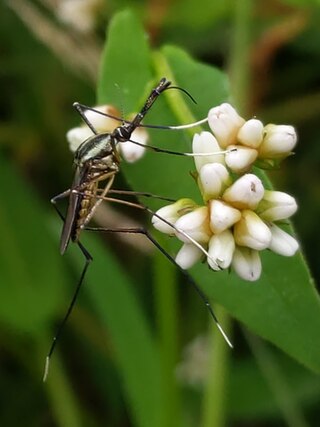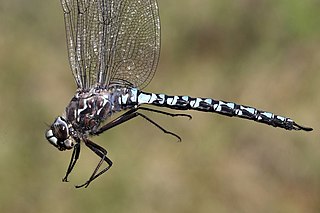
The prairie skink is a species of skink endemic to the prairies east of the Rocky Mountains in North America. It is one of only seven species of lizards that occur in Canada.

The Cuban tree frog is a large species of tree frog that is native to Cuba, the Bahamas, and the Cayman Islands; but has become invasive in several other places around the Americas. Its wide diet and ability to thrive in urban areas has made it a highly invasive species with established colonies in places such as Florida, the Hawaiian island of Oahu, and the Caribbean Islands. These tree frogs can vary in size from 2 to 5.5 inches in length. Due to their large size, Cuban tree frogs can eat a wide variety of things, particularly native tree frogs, and their removal has shown to result in an increase in the amount of native tree frogs in an area. The tadpoles of Cuban tree frogs also heavily compete with native frog tadpoles, which can cause negative effects in body mass, size at metamorphosis, and growth rates for the native tadpoles.

Carya ovata, the shagbark hickory, is a common hickory native to eastern North America, with two varieties. The trees can grow to quite a large size but are unreliable in their fruit output. The nut is consumed by wildlife and historically by Native Americans, who also used the wood.

Jainosaurus is a genus of titanosaurian sauropod dinosaur of India and wider Asia, which lived in the Maastrichtian. It is thought to have been about the same size as its contemporary relative Isisaurus, measuring 18 metres (59 ft) long and weighing 15 metric tons. The humerus of the type specimen is 134 centimetres long.

Wrinkly Face Provincial Park is a provincial park 16 kilometres north of Winfield in British Columbia, Canada.

The northern sportive lemur, also known as the Sahafary sportive lemur or northern weasel lemur, is a species of lemur in the family Lepilemuridae. It is endemic to Madagascar. As a result of severe ecological and human pressures, the lemur is classified as Critically Endangered (CR) by the IUCN Red List.

Friedrich Gottlieb Bartling was a German botanist who was a native of Hanover.

Thricops semicinereus is a species of fly which is widely distribution across the Palaearctic.

Thricops is a genus of true flies of the family Muscidae.

Myotis septentrionalis, known as the northern long-eared bat or northern myotis, is a species of bat native to North America. There are no recognized subspecies. The northern long-eared bat is about 3–3.7 inches in length, with a wingspan of 9–10 inches. It is distinguishable by its long ears when comparing it to other bats in its genus. This species is commonly found in the northern United States and Southern Canada east of British Columbia. The geographic range includes 37 states.

Chaetodontoplus septentrionalis, the blue-striped angelfish and bluelined angelfish, is a species of marine ray-finned fish, a marine angelfish belonging to the family Pomacanthidae. it is found in the Western Pacific Ocean.
The Apostolic Vicariate of Northern Patagonia was a short-lived (1884-1904) pre-diocesan Latin Rite Catholic jurisdiction in Patagonia, southern Argentina. The see was in Viedma.

Toxorhynchites rutilus, also known as the elephant mosquito or treehole predatory mosquito, is a species of mosquito in the family Culicidae. Unlike most species in the genus that populate the tropics, Tx. rutilus is endemic to temperate regions. As their name suggests, these mosquitoes commonly lay their eggs in treeholes where their larvae are predators on a variety of arthropods. As with other mosquitoes, they also inhabit other bodies of stagnant water such as in a tire or artificial containers. but not large bodies of water like ponds and ground pools. Females are able to strategically locate breeding sites that already contain prey to oviposit in.

Euxoa septentrionalis is a species of cutworm or dart moth in the family Noctuidae. It is found in North America.

Doros aequalis is a species of syrphid fly in the family Syrphidae.

Onitis alexis, the bronze dung beetle, is a species of dung beetle in the family Scarabaeidae. It is endemic to Africa, Syria, Spain, Tunisia and Greece. It was introduced into Australia and is established in the warmer regions of northern Australia. The species is found in Oceania.
Philotiella speciosa, the small blue, is a species of blue in the butterfly family Lycaenidae.

Aeshna septentrionalis, the azure darner, is a species of darner in the dragonfly family Aeshnidae. It is found in North America.
The Ilha Maracá gecko is a species of lizard in the family Sphaerodactylidae. The species is endemic to northern South America.
Scrobipalpa septentrionalis is a species of moth native to northern China. It was one of nine Chinese species described by Oleksiy Bidzilya and Houhun Li in 2019. In coloration, it is mostly gray and brown, with some white on the head and antennae. Its wingspan is 11.0–13.5 millimetres (0.43–0.53 in). The plant on which it breeds is unknown.
















